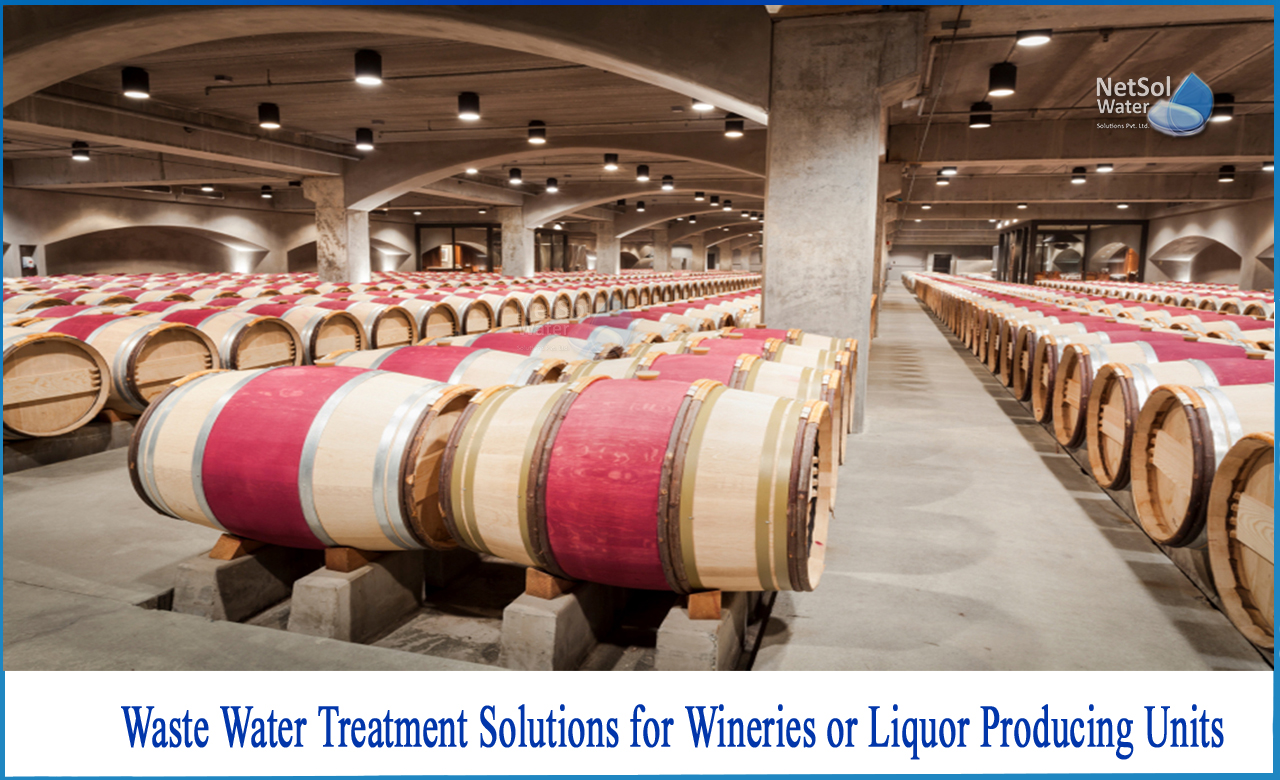How to treat Waste Water in Wineries or Liquor producing units?
Winery wastewater management is critical to a winery's business and environmental performance, and includes, among other things, the treatment of winery wastewaters (such as irrigation or processing water) that is "fit for purpose," as well as the lowering of environmental risks from wastewater discharges.
Seasonally, wastewater loads fluctuate greatly, with peaks followed by extended lulls. During these lulls, wastewater can become extremely contaminated, and due to the poor nutritional condition, it is frequently only manageable with additional procedures.
Waste water characteristics
The qualities of wastewater differ from winery to winery and are determined by the environment and type of wine produced. The "high-strength" winery process wastewater (i.e., with more than 7,000 mg/L of BOD and a TSS of more than 3,000 mg/L) has its own set of properties.
· Chemicals are a factor to consider(COD and BOD)
· Total dissolved solids (TDS) and total suspended solids (TSS)
· Sodium (Na), calcium (Ca), magnesium (Mg), and potassium (K) are examples of salts (K)
· Saline water (electrical conductivity)
· Nitrogen and phosphorus are examples of nutrients
· Alkalinity vs. acidity (pH)
· Levels of dissolved oxygen (DO)
Types of waste water in wineries or liquor producing units
A: Processing water: Wastewater is generated during the cleansing of raw materials sent to the winery, as well as spills. A high organic load suggests product (wine/grape juice) loss, which is both economically and environmentally undesirable.
B: Cleaning Waste Water: Cleaning wastewater is typically generated by washing equipment that comes into direct contact with the items. Cleaning chemicals, as well as wine or grape juice suspended particulates, are present in considerable quantities and are severely polluted, necessitating additional treatment.
C: Sanitary waste water: Sanitary wastewater is found in restrooms, shower rooms, and other public areas. Sanitary wastewater is comparable to municipal wastewater in composition and is typically piped straight to sewage treatment plants; however, it can be used as a nitrogen source for imbalanced effluents prior to additional aerobic treatment.
Wastewater treatments for wineries
1: Oxidation ponds: Oxidation ponds are a simple, effective, and low-cost method of decreasing the BOD of wastewater before it is discharged into an aquatic habitat. It is made up of a ring or oval-shaped canal with mechanical aeration devices installed. Mechanical devices aerate the screened wastewater that enters the pond at a rate of 0.25 to 0.35 m/s. Extended aeration is common in oxidation ponds, with long detention and solids retention durations.
2: Anaerobic ponds: A biological method perfectly suited for the pre-treatment of high-strength winery and brewery wastewater. Anaerobic ponds are an effluent treatment facility. Natural bacteria are used in the anaerobic process to break down biodegradable material in vineyard effluent. The bacteria do not require oxygen because they are anaerobic, unlike organisms in an aerobic process.
If the pond is quite deep, an anaerobic system can be very effective and cost-effective for eliminating high quantities of BOD and COD when utilised prior to aerobic treatment, as it concentrates biological action and lowers heat loss. Anaerobic ponds have a relatively high organic loading compared to the amount of oxygen entering the pond. The pond surface remains anaerobic as a result of this. Anaerobic bacteria break down organic substances in wastewater, releasing methane and carbon dioxide into the atmosphere. Sludge settles at the bottom, and a crust might form on the top.
3: Aerobic ponds: This is a type of wastewater treatment facility that keeps bacteria and algae suspended in the water. It has aerobic conditions all the way down to the bottom. Shallow ponds and aerated ponds are two forms of aerobic ponds.
I-Shallow pond: Shallow aerobic ponds get their dissolved oxygen from two sources: Air-to-water oxygen transfer and photosynthetic algae-produced oxygen. Although soluble biochemical oxygen demand removal efficiency can reach 95%, the pond effluent will contain a substantial number of algae, which will contribute to the total biochemical oxygen demand measured in the effluent. The suspended algae and microorganisms must be removed from the pond wastewater in order to eliminate both soluble and insoluble biochemical oxygen demand.
II-Aerated ponds are similar to oxidation ponds in that they are deeper and use mechanical aeration devices to distribute oxygen into the deep part of the pond. The aeration device also helps to ensure that the wastewater and bacteria are properly mixed. The main benefit of an aerated pond is that it takes up less space than an oxidation pond.
Netsol Water is Greater Noida-based leading water & wastewater treatment plant manufacturer. We are industry's most demanding company based on client review and work quality. We are known as best commercial RO plant manufacturers, industrial RO plant manufacturer, sewage treatment plant manufacturer, Water Softener Plant Manufacturers and effluent treatment plant manufacturers. Apart from this 24x7 customer support is our USP. Call on +91-9650608473, or write us at enquiry@netsolwater.com for any support, inquiry or product-purchase related query.



